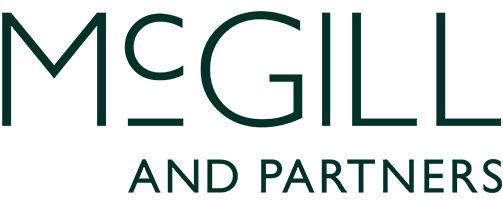Financial lines insurance market: what you need to know as a NED in 2023
Navigating today’s business environment is a huge task. Tightening regulations, increasing class action litigation, emerging technologies and increasing level of public and government scrutiny are all challenges presented to directors and officers.
There are also emerging risks such as increasingly sophisticated cyber-attacks, climate change, and modern slavery within the global supply chain, all of which drive claimants to bring legal proceedings against company directors and boards of businesses.
In this blog, Francis Kean, D&O expert from McGill and Partners insurance brokers explains what the likely trends will be in the financial lines insurance market in 2023.
An increasingly benign D&O Market
The significant softening of the D&O insurance market in all industry sectors, particularly for those policyholders who are able to articulate a good risk profile, already evident in 2022 will continue into 2023 driven by increased competition from new entrants to the market.
Explanation
The most significant constraint on competition during the hard market came from the downshift in the limits which major insurers were willing to deploy on individual risks as they sought to reduce portfolio volatility in the face of rising claims. That landscape has already changed. Shifting market dynamics, aggressive insurer growth targets and some significant policyholder withdrawals from the market led to a material softening of conditions in the second half of the year. In addition, policyholders have detected an increased market appetite as recent market entrants shift their strategies from initial book building on an excess only basis to cater for a desire more market leading primary and low excess positions.
Signs of a positive shift in the cyber insurance market
The hard market which had led to high premiums and has persisted for most of 2022 has hit its peak and will flatten and begin to soften in 2023, especially for those companies who can demonstrate strong controls and protections.
Explanation
Although losses from earlier years will continue to flow into the market for some time, the overall combined loss ratio for the cyber market is improving steadily as a result of the application of more stringent underwriting criteria and stronger information security capabilities among the policyholder community. In addition, new capacity has entered the market, bringing more competition which is reflected in pricing.
ESG Litigation
There will be more litigation in 2023 seeking to exploit the gap between ambition and achievement in the claims and promises relating to ESG made by companies. This trend will not be limited to environmental issues but will extend, for example, to supply chain workforce issues including modern slavery. There will also be more claims based on unintended consequences of ESG policies, such as alleged breaches of anti-discrimination laws by pursuing targets to improve diversity and inclusion in the workforce as litigants test the boundaries of such policies.
Explanation
The predicted increase in ESG related litigation stems from the relentless focus on the topic by stakeholders, pressure groups (with differing agendas) coupled with an almost infinite scope for interpretation and misinterpretation of the term. On top of this, new reporting and regulatory requirements to be imposed on companies will play a role. For example, the US Securities and Exchange Commission has published rules that will require domestic and foreign registrants to provide climate-related disclosures in their registration statements and annual reports. The UK Financial Conduct Authority has also proposed rules relating to the “sustainability” credentials claimed by investment managers who are collectively responsible for in excess of $6 trillion of assets under management.
Related post: Balancing ESG factors with business priorities and director’s duties
Increase in privacy related litigation
There will be an increase in litigation both in the UK and Europe and in the US relating to the collection, processing and storage of personal data.
Explanation
New legislation such as the Illinois Biometric Information Privacy Act coupled with stricter enforcement of existing legislation such as GDPR both in Europe and the UK and the growing scope for class actions being brought by consumer groups whose rights have been violated coupled with an increasingly sophisticated and international Plaintiff’s bar will be the drivers of this trend. Because it can often take several years for litigation (especially based on new untested legislation and therefore at greater risk of appeal), to be concluded, this trend is unlikely to have an immediate effect on market rates.
Increase in claims against directors in insolvency companies
There will be more claims against directors brought by liquidators on behalf of creditors of insolvent companies.
Explanation
According to the Insolvency Service, the number of companies entering liquidation in the UK between July 2021 and June 2022 is up 26% on the previous year and that trend is set to grow. The UK Supreme Court has delivered a 2022 judgment (BTI 2014 LLC vs Sequana SA and others) emphasising the importance of the duties owed by directors to take account of the interests of creditors as a company’s financial position deteriorates. Increasingly available D&O insurance (coupled with no win no fee funding mechanisms) may encourage more litigation by providing liquidators with the commercial incentive to pursue recovery of policy limits (as well as providing a means of protecting directors from liability through the funding of defence costs).
This blog is written by McGill & Partners, who has provided educational and insightful content to our community of influential board members. In addition to blogs, more in-depth resources are included in the NED Accelerator® Programme or available within the member area of the NEDonBoard platform.
Not a member yet? To access the learning resources of the platform, including our NED Library (which contains tens of webinars and presentations from subject matter experts and experienced board members), join our organisation as a member.




